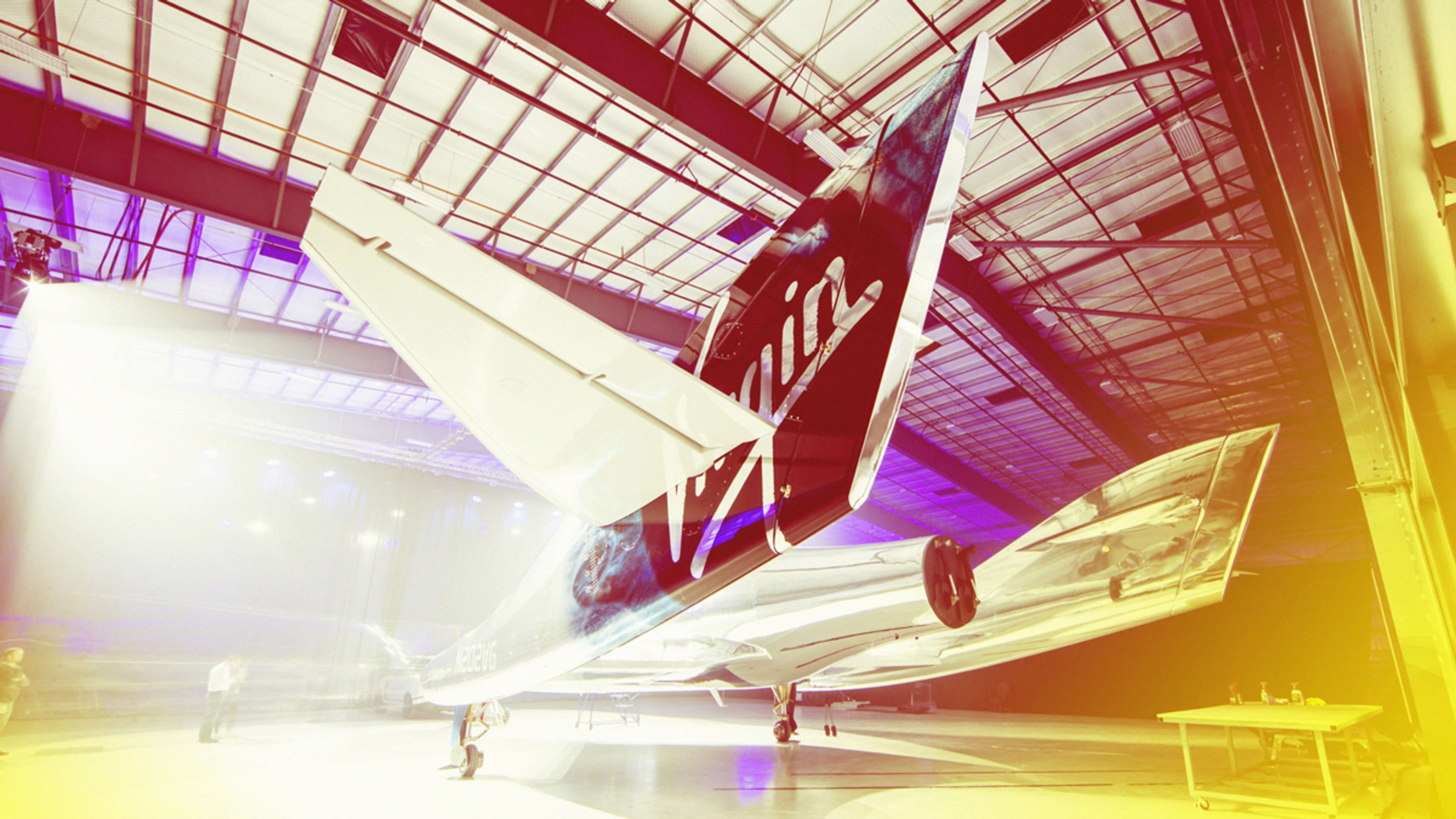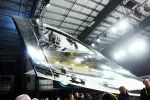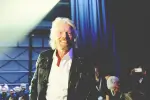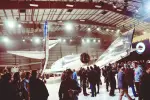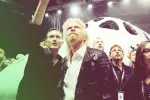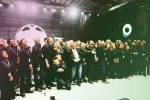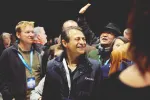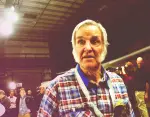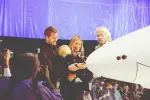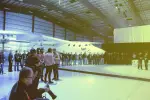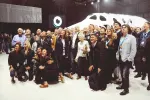You can’t tell Richard Branson he’s grounded.
Today, nearly 16 months after the British tycoon’s space company, Virgin Galactic, lost a pilot and spaceship in a tragic accident, it pulled back the wraps on a sparkling, all-new replacement, christened Unity.
On October 31, 2014, Virgin Galactic’s race to be the first company to take largely untrained tourists to space took a calamitous detour when, during a test flight, its SpaceShipTwo exploded in midair and then crashed. The copilot was killed, and the pilot was seriously injured.
Although initial concerns centered on the craft’s design, it was ultimately determined that the disaster was human error–the copilot prematurely deployed the ship’s tail. Though unfortunate, that fact may have helped Branson’s company avoid extra years of delays given that SpaceShipTwo’s design wasn’t at fault.
Now, Virgin Galactic is ready to pick up where it left off. At a ceremony in Mojave, California, attended by luminaries such as X Prize head Peter Diamandis and Scaled Composites founder Burt Rutan–not to mention dozens of paying customers who hope to soon be Virgin Galactic passengers, as well as Branson’s mother–the company made it clear that the accident, like so many others in the history of spaceflight, was not enough to deter those intent on pushing the outside of the envelope. Its new Unity spacecraft is meant to step right in where its predecessor left off.

The “purpose which drives me and our team and which unites us with our partners and friends is the belief,” Branson, Virgin’s CEO, told a crowd of several hundred at the event, “that together we can make space accessible in a way that has only been dreamt of before now. And by doing that, we can truly bring positive change to life on Earth.”
Not Ready To Fly
Lest anyone expect the craft to take passengers aloft immediately, Virgin Galactic says Not quite. First, more testing. Lots and lots of testing.

“If you are expecting SpaceShipTwo to blast off and head straight to space on the day we unveil her, let us disillusion you now: this will be a ground-based celebration,” the company wrote in a blog post yesterday. “Indeed, our new vehicle will remain on the ground for a while after her unveiling, as we run her through full-vehicle tests of her electrical systems and all of her moving parts. We already know these things work individually, but one can’t simply assume they will all work together—that must be tested and verified. We’ll do so quickly, but we won’t cut corners.”
Still, there’s a new spaceship, and for romantic types whose gaze is always to the stars, that’s big news.
Although Space Adventures had claimed the mantle of first space tourism company by taking amateurs–such as Cirque du Soleil founder Guy Laliberte, video game designer Richard Garriott, and millionaire engineer Dennis Tito–to the International Space Station, those passengers were put through a rigorous training regimen before blasting off aboard a Russian Soyuz rocketship. They also had to pay at least $20 million for the privilege of doing so.
By comparison, Virgin Galactic wants to be the first company to take just about anyone willing to pony up $250,000 for a ride high into the sky. Of course, its passengers–who will go through just three days of astronaut training–will only reach altitudes of just more than 62 miles or so aboard SpaceShipTwo.
The precursor to SpaceShipTwo was, of course, SpaceShipOne, built by famed aircraft designer Rutan’s Scaled Composites and operated by Microsoft cofounder Paul Allen’s Mojave Aerospace Ventures. It won the Ansari X Prize–and the accompanying $10 million reward–in 2004 by being the first team to launch a reusable manned spacecraft into space twice in two weeks.
That ship was soon retired–and placed in the Smithsonian National Air and Space Museum–and was followed up with SpaceShipTwo, which is launched into space after being taken into the skies by its mothership, WhiteKnightTwo.
Put A Pin In It
Because the 2014 accident was determined to be pilot error, no major design changes were necessary for the new SpaceShipTwo.
Virgin Galactic senior vice president of operations Mike Moses said the new ship is very much like its predecessor and that the National Transportation Safety Board had validated that there were no fundamental flaws in the original SpaceShipTwo design.
But Virgin Galactic did set out to make sure the same mistake that led to the tragedy won’t happen again.
The accident was caused by the pilot unlocking the feather in the rear of the spacecraft in a way that was not safe at that point in flight. Unity has a pin that will prevent the feather handle from being moved when the computer says it’s unsafe to do so.
Still, because there is much testing yet to do, the company is refusing to publicly announce a timetable, either for flight testing or for the beginning of commercial operations. But Virgin Galactic CEO George Whitesides–who said the company has invested more than half a billion dollars in the program–did say that the new SpaceShipTwo will be the first to carry paying customers.
Lofty Rhetoric
On the day of the 2014 accident, Branson traveled to Mojave to consult and commiserate with many of the company’s employees.
Today’s celebratory visit to Mojave was, Branson noted, “very different” from that day 16 months ago.
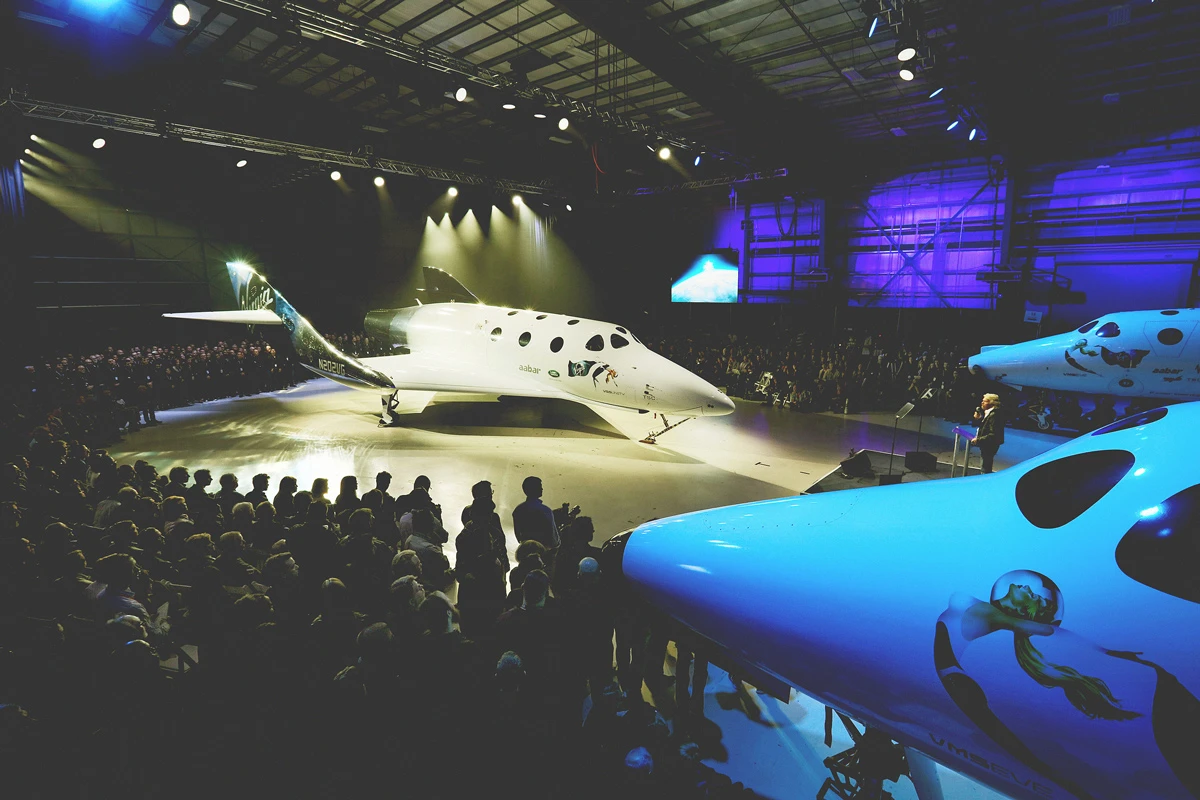
“As I traveled back home from that tumultuous event with an aching heart and a mind filled with what the future might hold for us,” Branson said, “I started to read some of the hundreds of messages that had been flooding in from around the world, and I can honestly say I have rarely been as moved or as uplifted.”
One of the messages was from a man whom Branson knew he had to ask to name the new SpaceShipTwo: world-famous scientist Stephen Hawking.
It had been rumored that Hawking–who is supposed to be one of the first Virgin Galactic passengers–would be on hand today to name the new ship, but his health seems to have prevented that appearance. Still, Hawking delivered a message to the gathered crowd praising Virgin Galactic and the lofty goals the company and its employees are reaching for.
“I have long been an enthusiastic supporter of human spaceflight, and in particular, efforts aimed at making this enormous human achievement more accessible,” Hawking said. “The first private astronauts will be pioneers. The first flights are expensive. But over time, I hope that space flight will become within the reach of far more of the Earth’s population.”
“We seem to be able to cooperate between nations in space in a way we can only envy on Earth.”
Space exploration, in fact, is something that brings us together, Hawking continued. “We seem to be able to cooperate between nations in space in a way we can only envy on Earth,” he said. “Taking more and more passengers out into space will enable them and us to look both outwards and back, but with a fresh perspective in both directions. It will help bring new meaning to our place on Earth and to our responsibilities as its stewards, and it will help us to recognize our place and our future in the cosmos–which is where I believe our ultimate destiny lies.”
A “Re-Commitment To Human Exploration”
If one thing is clear after so many decades of putting people–and trying to put people–into space, it’s this: Space travel is hard.
Back in 2004, it seemed like space tourism was just around the corner. By winning the Ansari X Prize, Rutan and his team–and by extension, Virgin Galactic–demonstrated to the world that we were on the cusp.
Yet space tourism remains a future endeavor.
“I hoped it would move much faster,” X Prize head Peter Diamandis told Fast Company. “But we’re dealing with the realities of physics and money.”
Nevertheless, Diamandis added, “there’s no doubt we’ll move forward….We’re at the beginning of a real industry.”
For his part, Rutan is “puzzled” at the fact that all these years after he won the first X Prize, no one has even repeated the feat that helped him beat out teams from across the world during the 2004 competition.
“It’s horrible,” he said of the lack of progress. “I predicted [in 2004] that within 10 years, there would be competing spacelines. I was totally wrong.”
“I predicted [in 2004] that within 10 years, there would be competing spacelines. I was totally wrong.”
Rutan disputes Diamandis’s notions about physics and money being the culprits, but said he has no idea what the real reason is.
For those at Virgin Galactic, the hope is that both Diamandis and Rutan will soon see their fears abated, and that not only will the company soon be ferrying paying customers into space, but that those missions will be just the beginning of a wide range of space-based accomplishments.
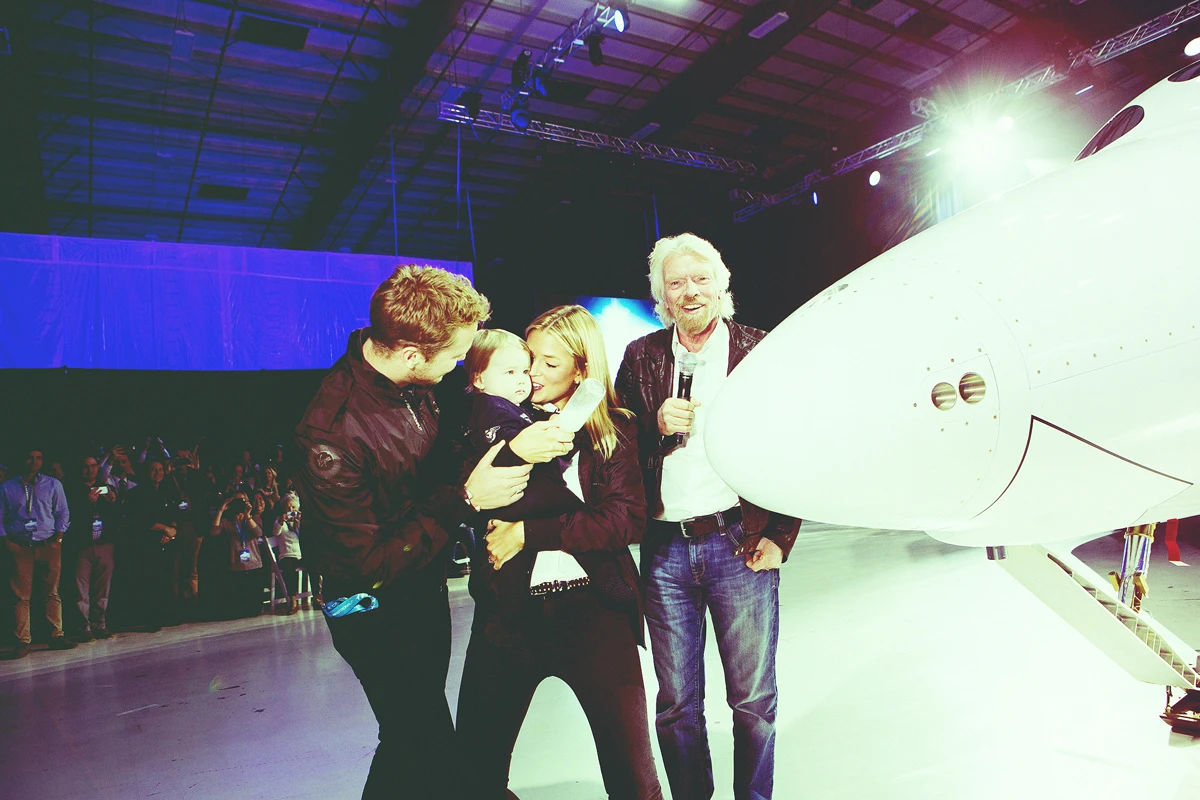
“First of all, it’s pretty cool to be taking people to space, and that’s the challenge,” Branson said during a press briefing earlier in the day. “We’ve been at this for 10 years….Once you’ve got people in space, then why shouldn’t we have…point to point travel at tremendous speeds. And a lot of people who work here are eager to start working on that program. And why shouldn’t we…have an orbital vehicle. And we will start to do that.”
Also, Branson says, since the International Space Station only has a few years left, there’s no reason Virgin Galactic can’t replace the Space Station.
He also noted that he just had a meeting with a U.S. senator about asteroids, and discussed whether Virgin Galactic could help (with asteroids near) Earth. “Let’s give it a go,” he said. “Can Virgin Galactic help with debris in space?”
Recognize your brand’s excellence by applying to this year’s Brands That Matter Awards before the early-rate deadline, May 3.
